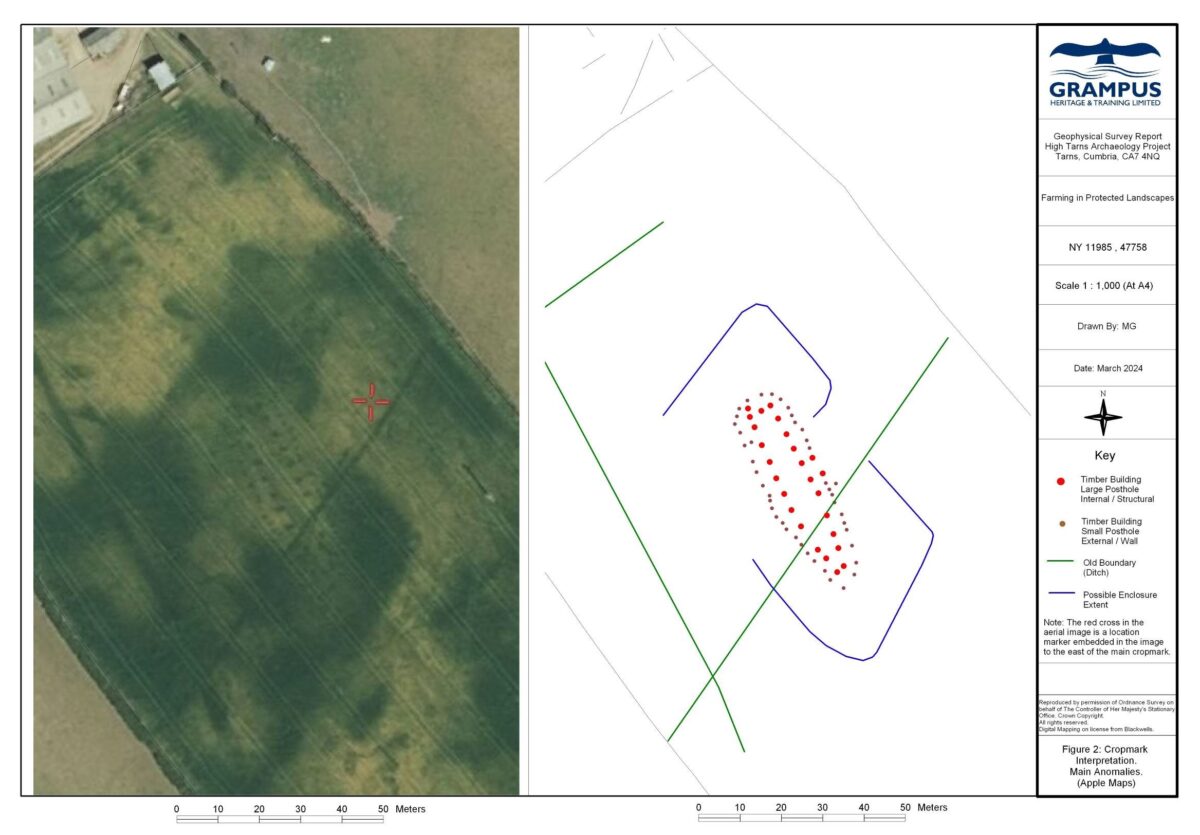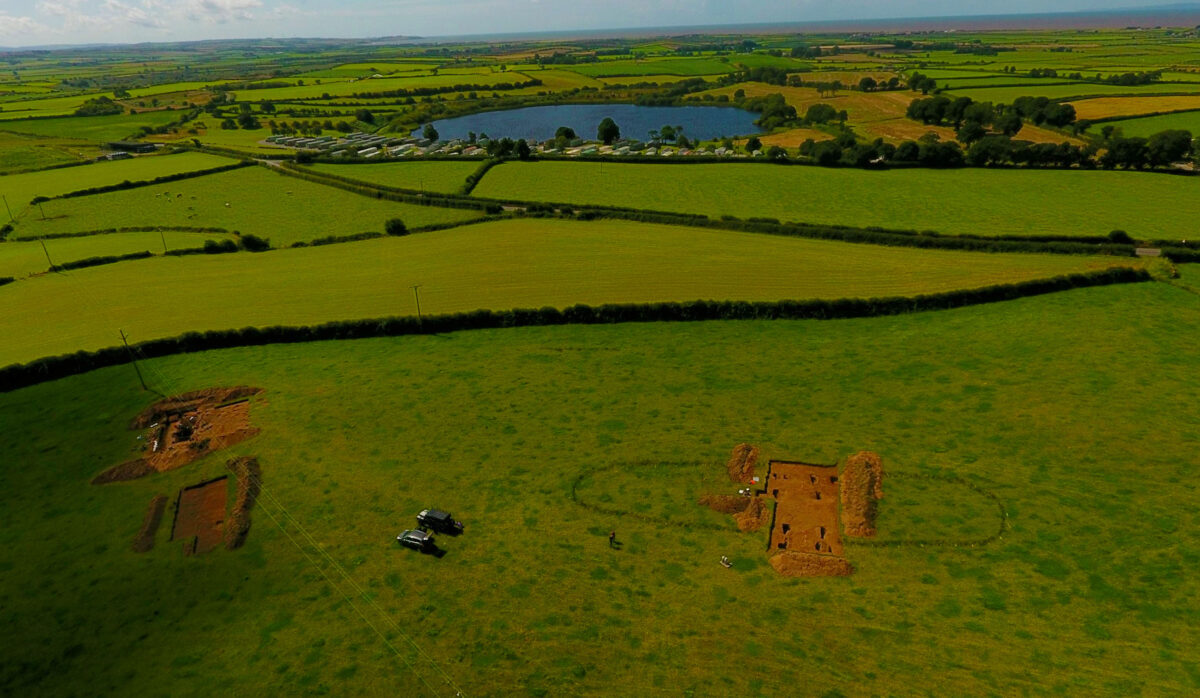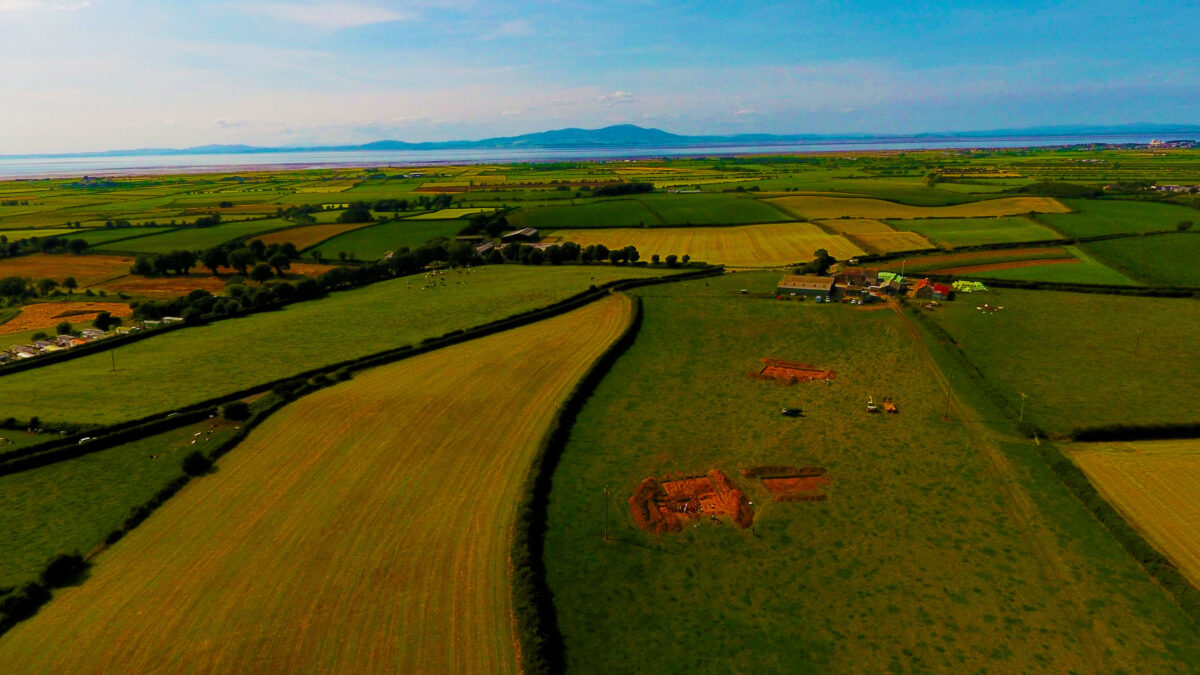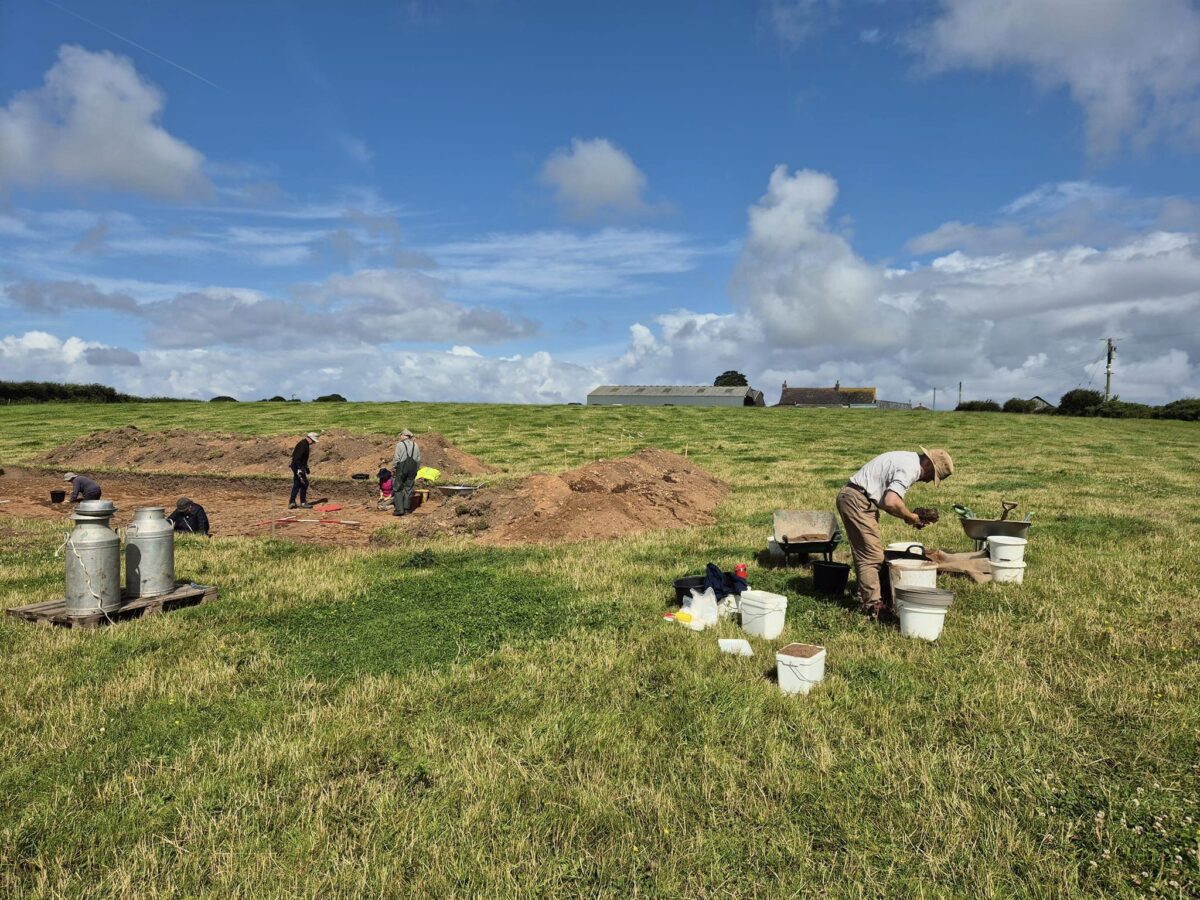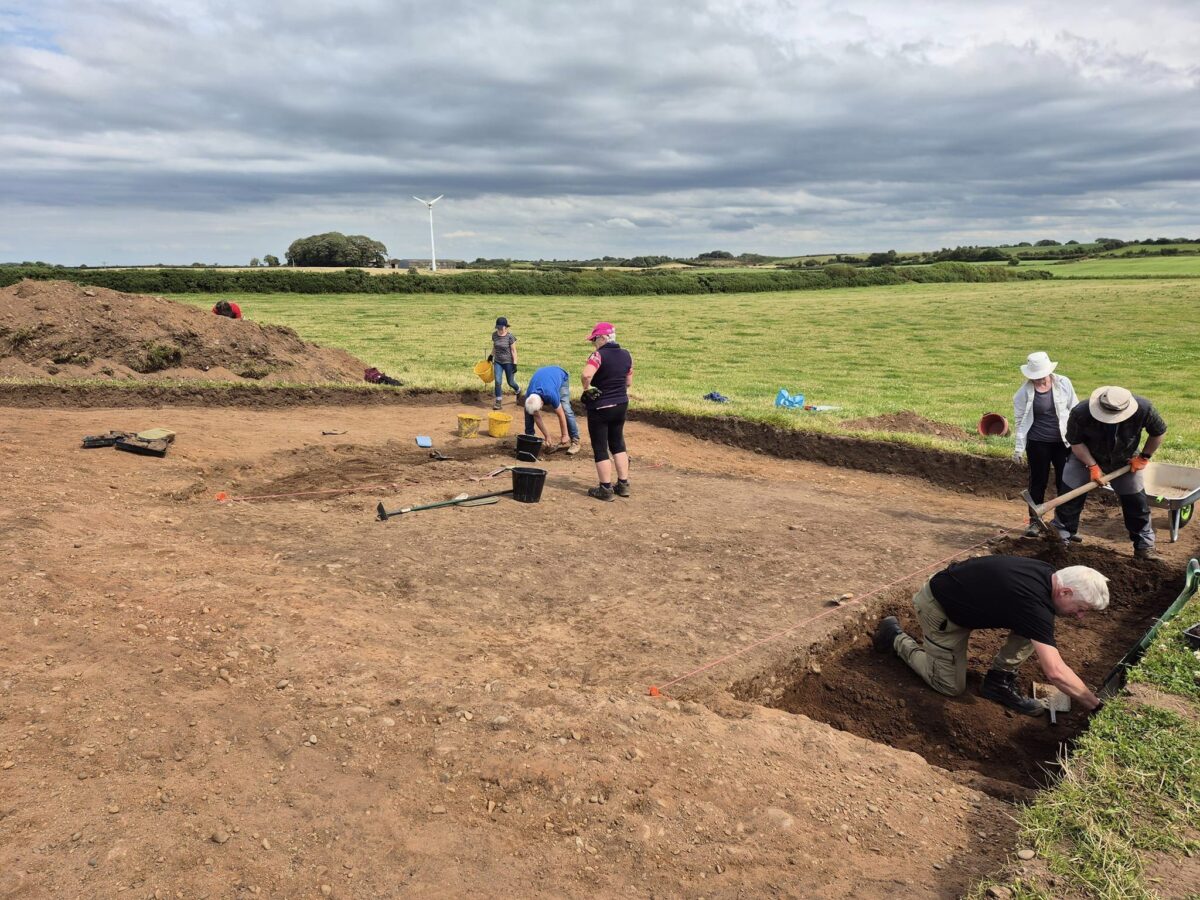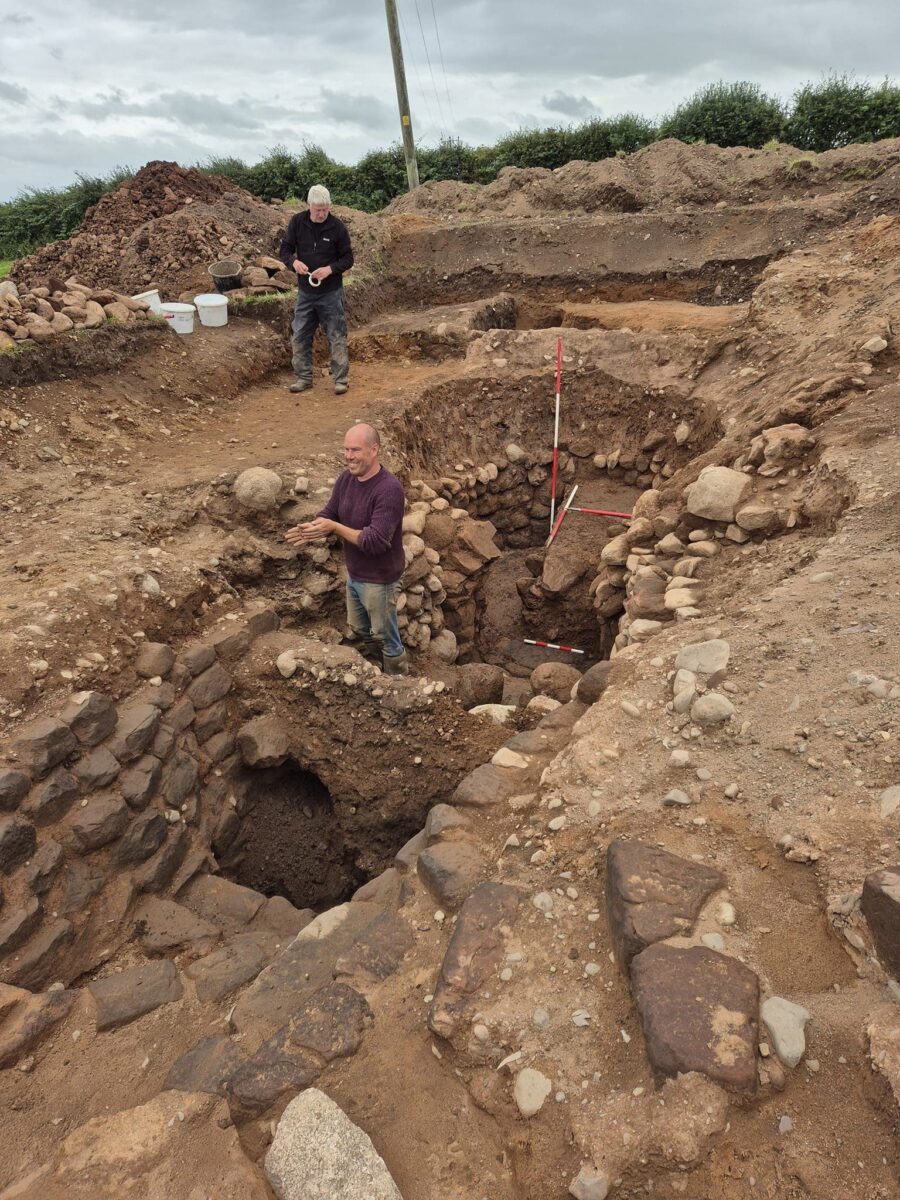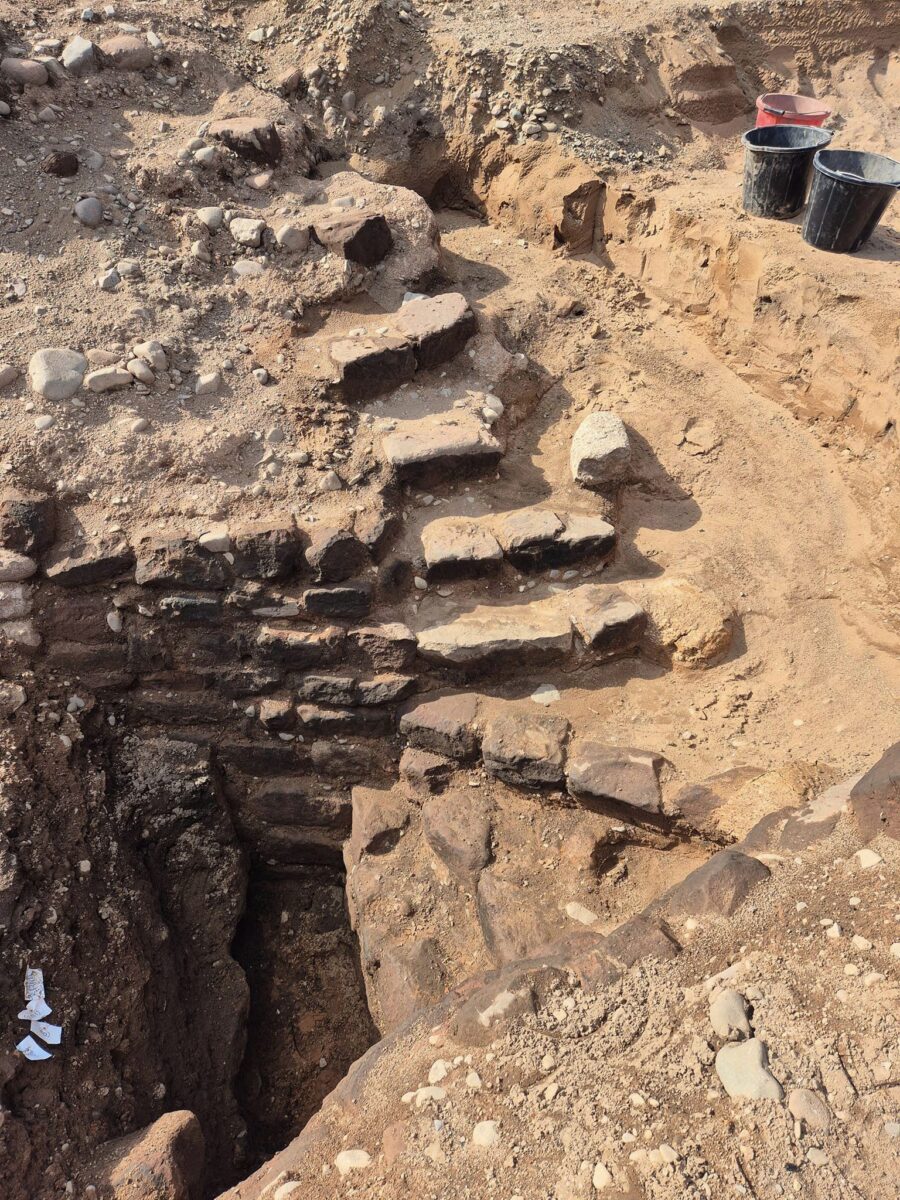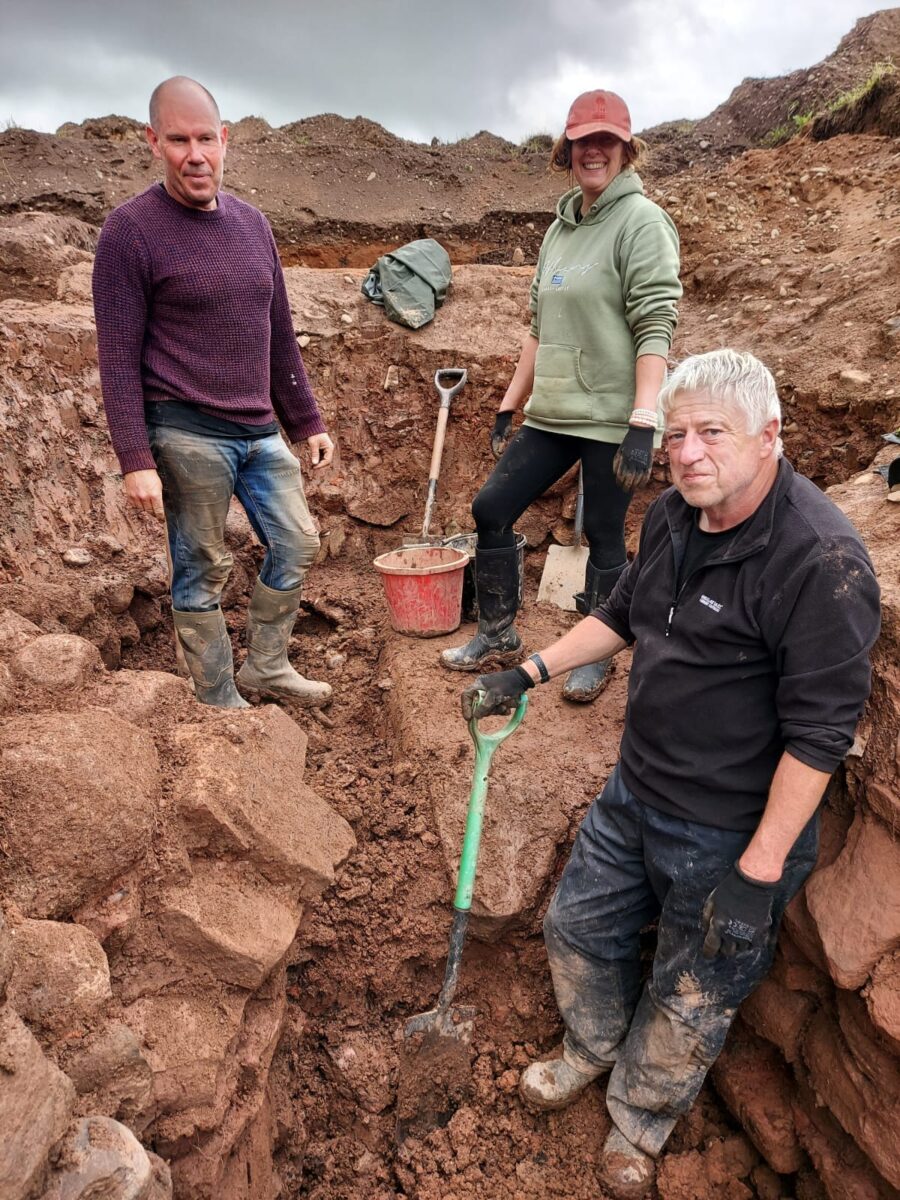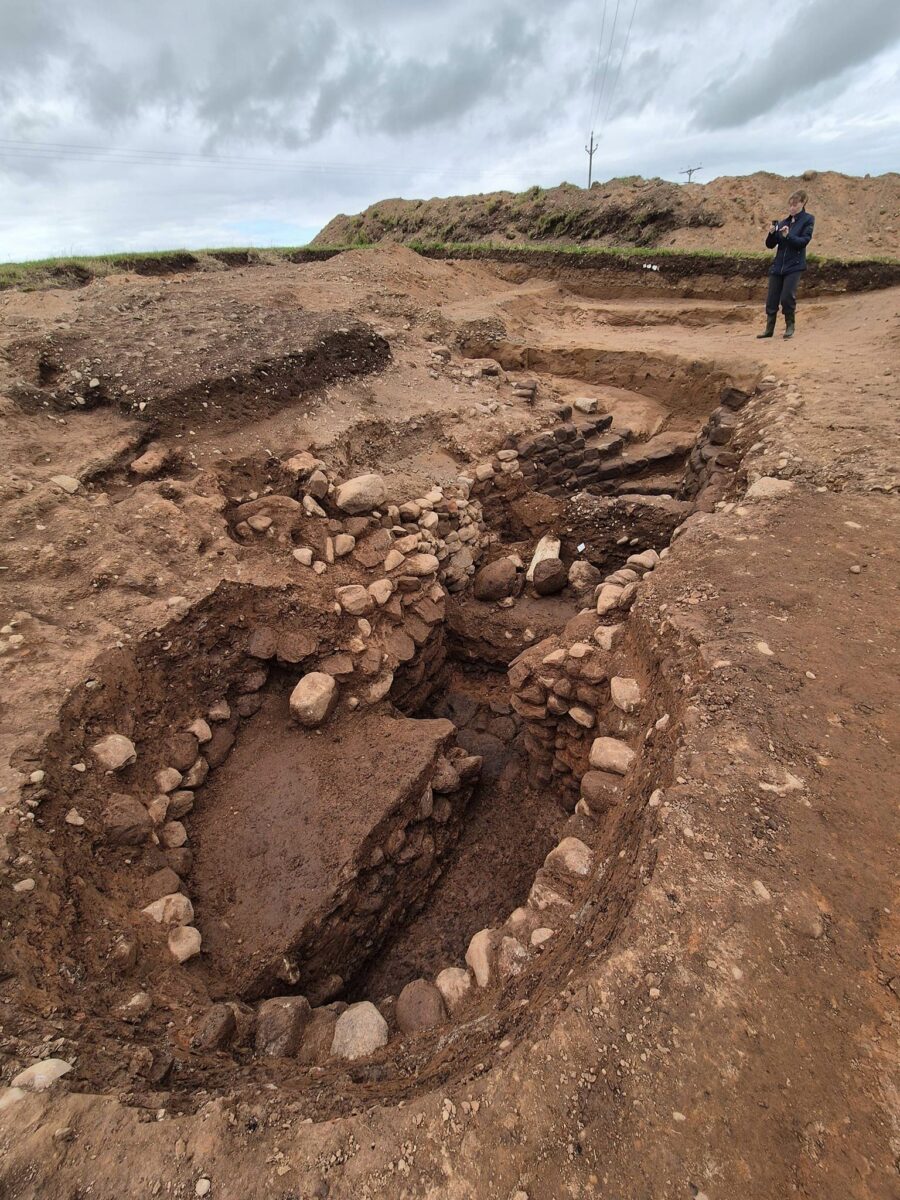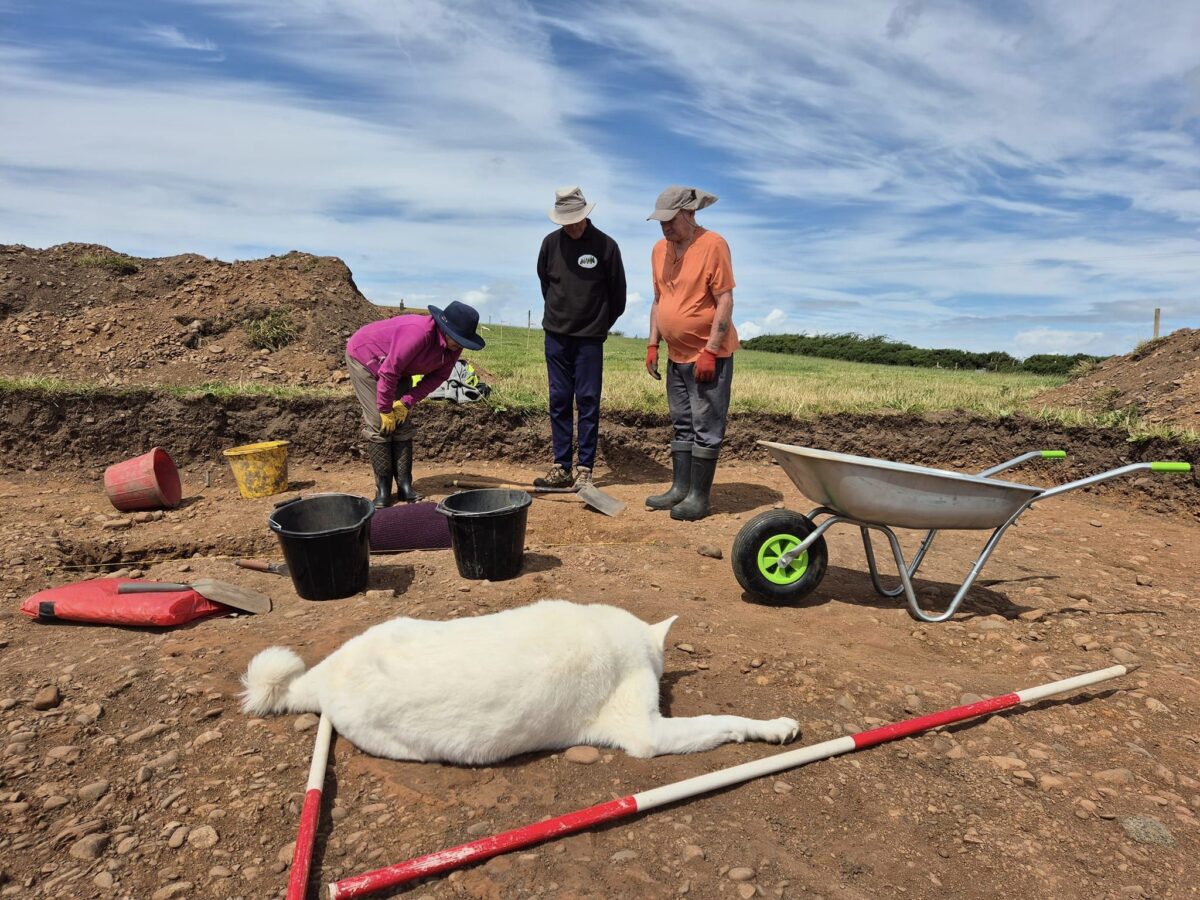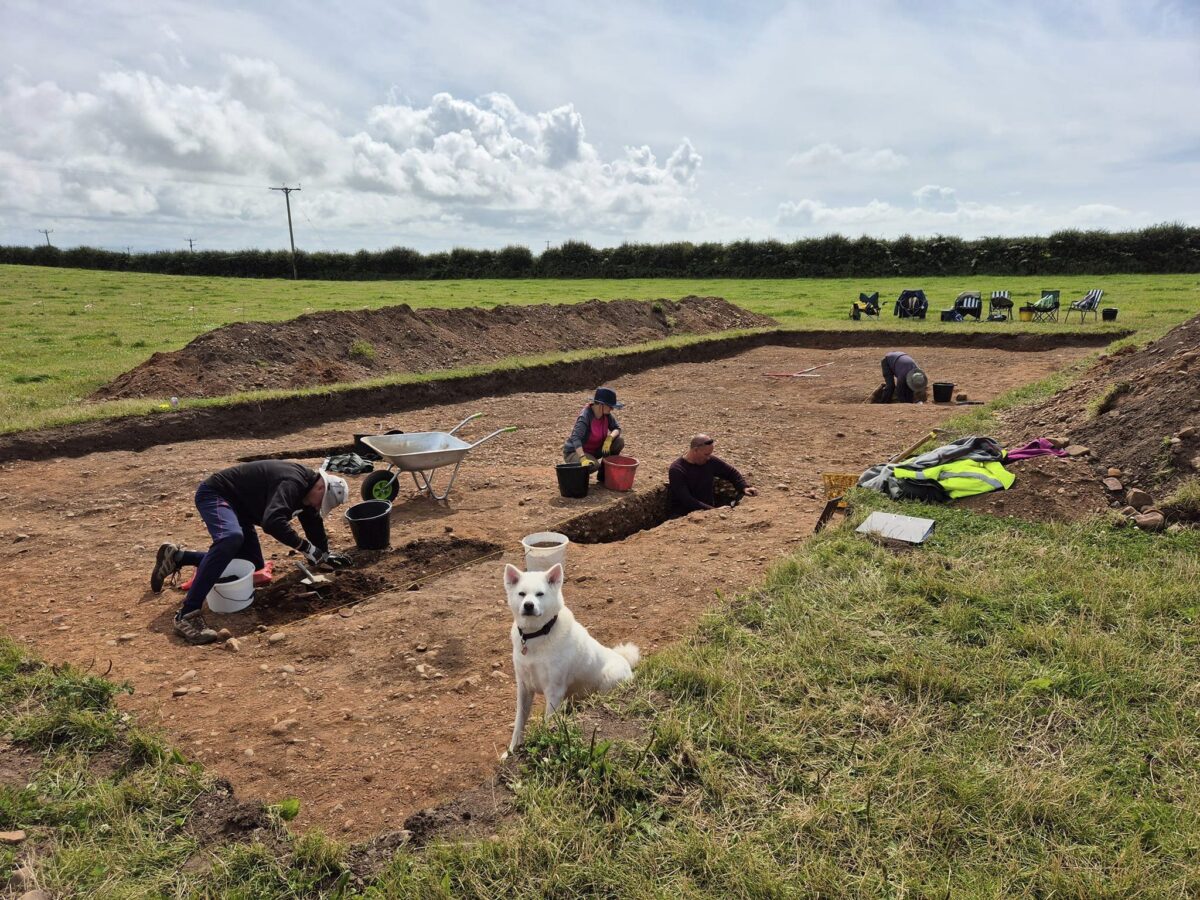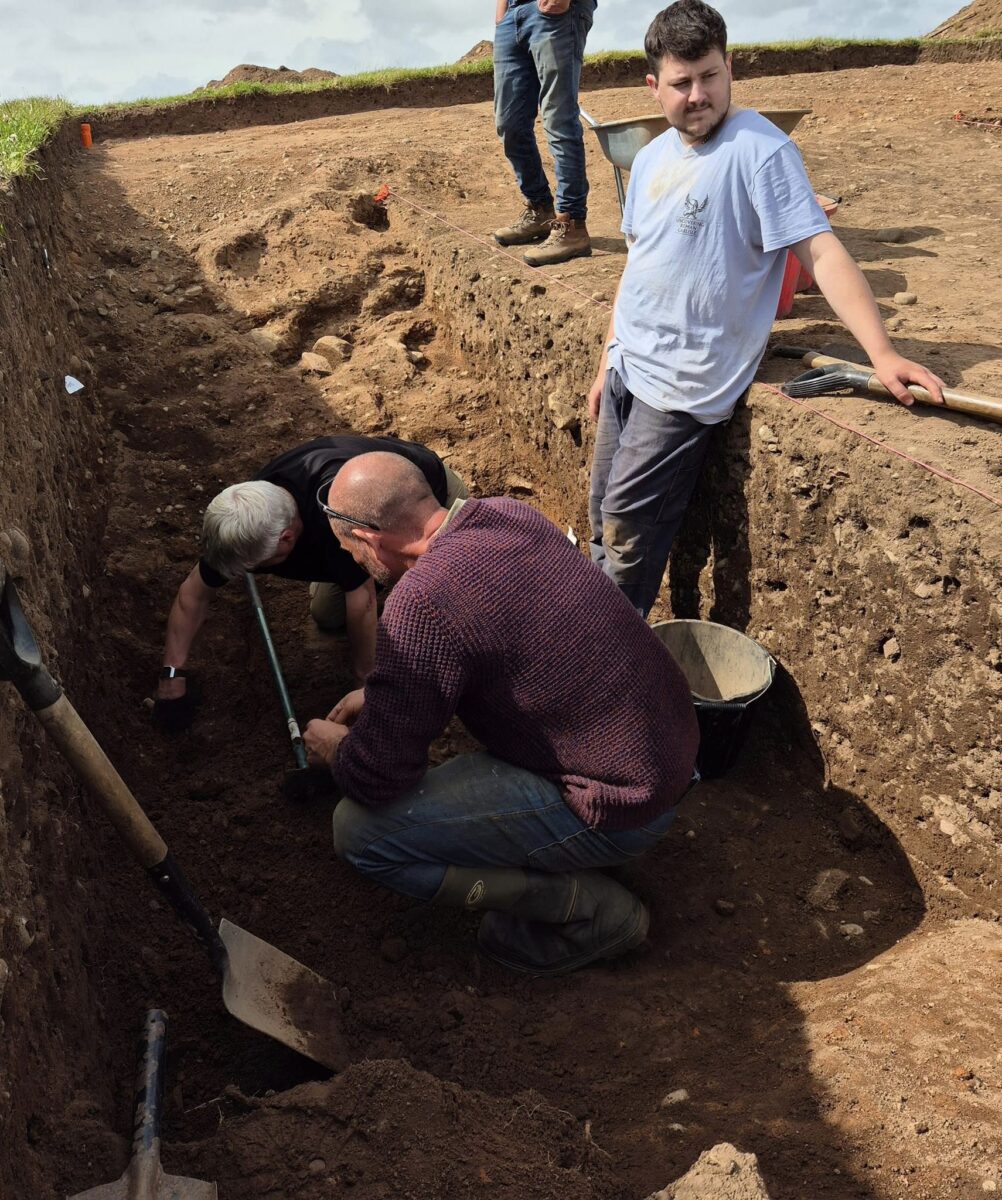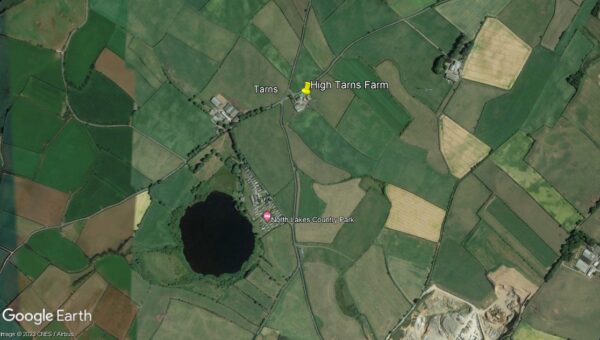Survey Location: High Tarns Farm, Nr Silloth, CA7 4NQ
(from Jan 2024 to Feb 2025)
Latest news
We have now received the carbon dates from the Grampus-led excavations at High Tarns in Cumbria, funded by Defra through Solway Coast National Landscape’s Farming in Protected Landscapes programme. I am delighted to share these with you now.
Carbon Dates
Trench 1: Internal Structural posthole. This was from one of the load-bearing timbers forming the aisle down the centre of the building 990 – 1040 AD at 94%
Trench 2: Charcoal Production Pit. This was cut by the later corn-dryer and reflects last use of the feature 990 – 1160 AD at 95%
Trench 2: Corn Dryer. Sample from the bottom of the drying chamber reflecting last use 1040 – 1180 at 94%
Interpretation
The dating of the timber building to the late 10th / early 11th century shows that the structure is not at all related to, and significantly pre-dates, the Cistercian monastery of Holme Cultram. Furthermore, this date allows us to interpret the building as a large Hall of the late Viking Age. As if that wasn’t exciting enough, this is the largest Viking Age building to be discovered and excavated in Britain.
The significance of this discovery, in shedding light on the early medieval period and social structure in rural Cumbria and more widely, is hard to overstate. When we consider the impressive scale of the hall in association with the charcoal production pit, the grain dryer, and the other features identified through geophysics yet to be excavated, it seems most likely that the hall is the focus of an early medieval Manor Farm. I have used the term Manor Farm as applied to high status Viking Age farms in Denmark (for example) because it encompasses not only the hall, but also the social structure and broader agricultural activity associated with such a site. Although we have no cultural material from the excavation, to find comparative examples we must look to Scandinavia. Viking Age heritage in Cumbria, sometimes called ‘Anglo-Scandinavian’ culture, is well documented. Within our region we have Scandinavian placenames, dialect, Viking burials and a wealth of sculpture from the period in our older church sites. The hogback stones found at several church sites in Cumbria are depictions of large high-status halls. Although the strong cultural influence from Scandinavia in the Viking Age in Cumbria is without doubt, absence of buildings from the period in the archaeological record has often been attributed to the likelihood that later buildings were built on top of settlement sites. This is almost certainly true, a good place to build and live remains an attractive place to live. This underlines the significance of High Tarns, where we have found the whole footprint of a building from the late Viking Age.
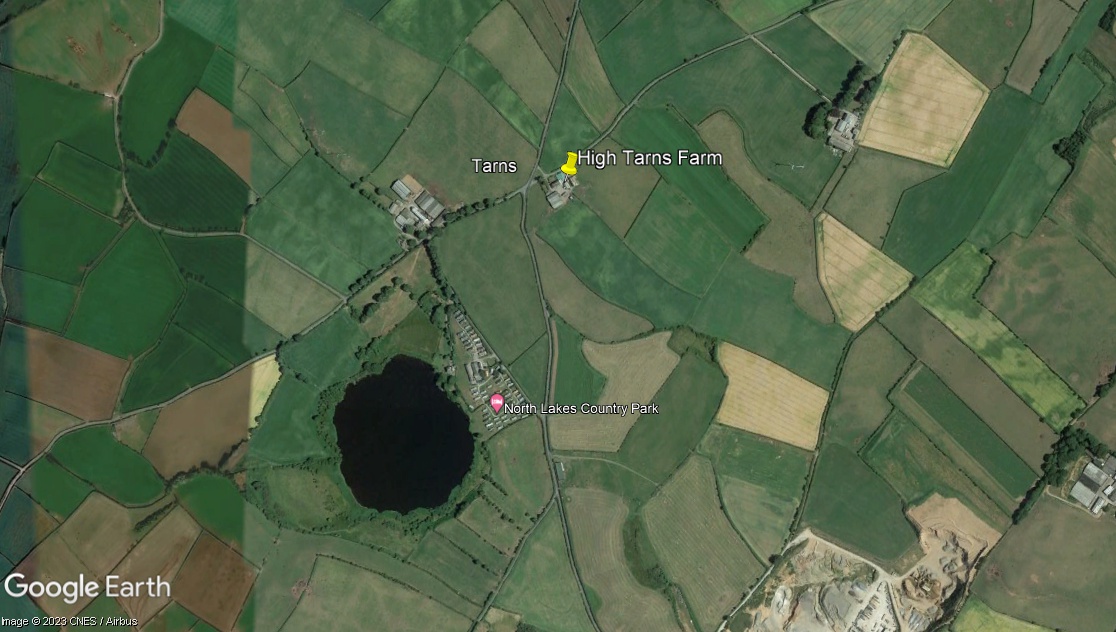
High Tarns Archaeology Project – Background
The High Tarns Archaeology Project was instigated and managed by Grampus Heritage and Training Limited following our identification of an archaeological cropmark using open-source satellite imagery in late 2022. The cropmark showed the clear footprint of a timber building measuring 50m in length by 15m in width at the widest point (external posthole measurements). Our initial reason for researching this area was to search for evidence of a monastic Grange Farm, known to have been established within the Tarns area by Holme Cultram Abbey by 1200 AD. Although the cropmark did not look particularly Cistercian in plan, all of our subsequent
work has been to establish the date of the timber building and to place it within a broader landscape context. In May 2023 Grampus worked with members of the west Cumbria archaeological society to conduct a 2-day geophysical survey in the cropmark area. Although the building did not show in the magnetometry survey results, we did identify some magnetic anomalies to the south of the
feature which warranted further investigation and demonstrated the potential of a larger geophysical survey to understand the historic landscape at Tarns. In November 2023 Grampus Heritage successfully submitted a funding application to Defra through Solway Coast AONB’s Farming in Protected Landscapes programme to undertake an extensive geophysical survey at High Tarns. The aim of this was to engage and work with local volunteers to complete a magnetometry and resistance survey over an area of 11 hectares
around the cropmark. With kind permission from the landowners Neil and Irene Armstrong, the survey was completed over the winter of 2023/2024 with extremely interesting results. Although the timber building itself did not show clearly in the geophysics, we did identify several archaeological anomalies which represent a previously unrecorded rich historic landscape. I would like to say a huge thank you to the more than 50 local volunteers gave their time to complete this winter fieldwork. The weather was not always kind, but your determination, enthusiasm and good humour never wavered. With such enthusiasm and interest from Neil and Irene Armstrong to learn more about the archaeology on their farm, strong support from local community volunteers to undertake further fieldwork and intriguing cropmark and survey results, Grampus Heritage submitted the High Tarns Archaeology Project funding application to undertake an excavation. Our application to Defra through Solway Coast National Landscape’s Farming in Protected Landscapes
programme was successful and enabled us to conduct a community archaeology excavation with local volunteers from 16th July to 10th August 2024. In deciding where to position our trenches for maximum benefit we used a combination of the aerial image cropmark, magnetometry survey and resistance survey. Even though the timber building did not show clearly in geophysics, we targeted this structure with trench 1, marking the extent of the structure in the field with marker canes and opening a trench across the centre
of the building (18.5m X 9m). There were many possible targets for Trench 2 but we decided to target an anomaly which showed clearly in the aerial photograph as a positive cropmark, resistance as a low resistance anomaly and magnetometry as a positive magnetic anomaly. All of this suggested that the feature was cut into the ground. Trench 1 successfully identified and recorded 10 large postholes which were consistent in arrangement with those identified in the aerial photograph. This excavation confirms the presence of a large aisled timber building measuring around 50m in length and 15m in width at the widest point. Internally, the structure would have 3 aisles and 10 bays. Trench 2 identified a large cut-feature in a natural sandy mound to the south of the timber building. The excavation revealed this to be a grain drying kiln or ‘corn-dryer’ with steps for access, stone lined walls, the remains of an arch over the stoke-hole and a sub-circular drying chamber to the west built from clay and cobble. The earliest feature in trench 2 was a charcoal production pit which had been cut by the construction of the corn dryer. On behalf of all who worked on the excavation I would like to thank Kevin Mounsey for supervising the excavation in trench 2 and to Don O’Meara of Historic England whose archaeobotanical work on site
identified an abundance of charred oats associated with the drying kiln. Trench 3 was opened to investigate a spread of metal working waste although no structural features were identified. The excavation was carried out by a team of more than 50 volunteers and the digging was often difficult. Carefully excavating the gravel fill of postholes which were cut into a natural glacial till (sand and gravel) was challenging but the skill and determination of volunteers meant that all edges were found. The corn-dryer in trench 2 required heavy digging and lifting of spoil out of the trench which was tiring work, rewarded by revealing such an impressive structure. The finds: This is a brief section! Trench 1 showed that all occupation surfaces related to use of the timber building have been ploughed out. The trench stratigraphy consisted of a layer of ploughsoil above the natural sand and gravel into which the postholes were cut. We found no
stratified dateable finds or cultural material in this trench. Although this seems unfortunate, we must also recognise that this is the reason the posthole arrangement showed so clearly in the aerial photograph and, without this, we would not have identified the site in the first place. Organic material such as wood, bone and leather would not survive in these soils. Stratified cultural material was also absent in the trench 2 corn-dryer, with the exception of 2 small sherds of pottery provisionally dated to the later medieval period. These were deposited above the collapse of the drying kiln after it had gone out of use.
What happened so far:
Phase 1: In November 2022 Grampus Heritage & Training undertook desk-based research to look at recently available aerial photography of the area around Tarns in #Cumbria. The aim was to search for #archaeological anomalies, showing as cropmarks, which may indicate the location of the grange at ‘Ternis’, a medieval #monastic #farm established in the Tarns area by the Cistercian monastery of Holme Cultram (Wilson, 1905).
They hoped to reveal anomalies which could be further invested through community excavation next year and to establish more context for the timber building identified from a cropmark.
Phase 2: 15th to 26th January 2024
Phase 3: 5th to 16th February 2024
Phase 4: excavation in July 2024
Our archaeologist a short talk of Mark Graham on the excavation and what has been found during the 12 day dig in July 2024
results: 3 D model of the unearthed finds in Trench 2
Media Coverage:
Times and Star article: ’50 volunteers set to dig into medieval past at Silloth farm’
BBC Cumbria feature on Tarns excavation
BBC Radio report
Times and Star: ARCHAEOLOGISTS have unearthed what appears to be a medieval grange farm in Silloth.
Times and Star: Cumbria farmers ‘amazed’ as signs of medieval history unearthed
Photo Gallery and video of the site
